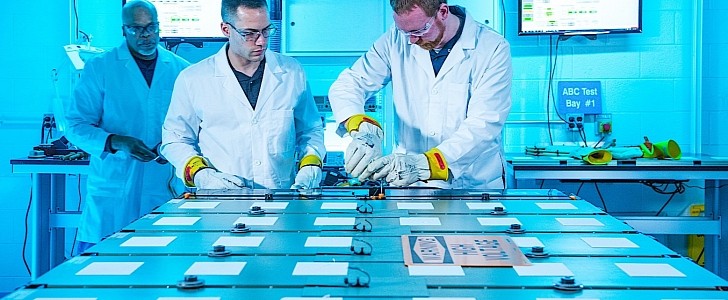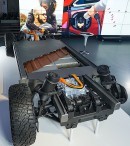Out of the blue, American carmaker GM sprung into life this week with two major announcements about its future. The first was the partnership with electric car company Nikola for the production of the Badger pickup truck. And now comes some news from the Ultium front.
Ultium is how GM calls its battery solution for the flood of electric vehicles we are told to expect in the not-so-distant future. It can support either vertical or horizontal stacking of the pouch-style cells, can store between 50 and 200 kWh of electricity (that translates into range of up to 400 miles/643 km), and will support Level 2 and DC charging.
And now we also learn that it will be among the world’s first battery tech that will use a wireless management system. Called wBMS, it would make do without the flood of cables usually used to control or tell the batteries what to do.
The system was developed by a company called Analog Devices, and uses 90 percent fewer wires than in conventional systems. Yet, wBMS is fully capable of over-the-air upgrades, real-time battery pack health checks, or the refocusing of modules and sensors for whatever new task is needed.
Using far less wires than before should allow GM to manufacture electric cars a lot easier, as no specific communications systems or complex wiring schemes would be needed as more and more models hit the market.
“Scalability and complexity reduction are a theme with our Ultium batteries – the wireless battery management system is the critical enabler of this amazing flexibility,” said in a statement Kent Helfrich, GM executive director of Global Electrification and Battery Systems.
“The wireless system represents the epitome of Ultium’s configurability and should help GM build profitable EVs at scale.”
GM added that there’s no danger of the system being hijacked by someone looking to do some harm, as it is “protected by cybersecurity measures.”
And now we also learn that it will be among the world’s first battery tech that will use a wireless management system. Called wBMS, it would make do without the flood of cables usually used to control or tell the batteries what to do.
The system was developed by a company called Analog Devices, and uses 90 percent fewer wires than in conventional systems. Yet, wBMS is fully capable of over-the-air upgrades, real-time battery pack health checks, or the refocusing of modules and sensors for whatever new task is needed.
Using far less wires than before should allow GM to manufacture electric cars a lot easier, as no specific communications systems or complex wiring schemes would be needed as more and more models hit the market.
“Scalability and complexity reduction are a theme with our Ultium batteries – the wireless battery management system is the critical enabler of this amazing flexibility,” said in a statement Kent Helfrich, GM executive director of Global Electrification and Battery Systems.
“The wireless system represents the epitome of Ultium’s configurability and should help GM build profitable EVs at scale.”
GM added that there’s no danger of the system being hijacked by someone looking to do some harm, as it is “protected by cybersecurity measures.”




